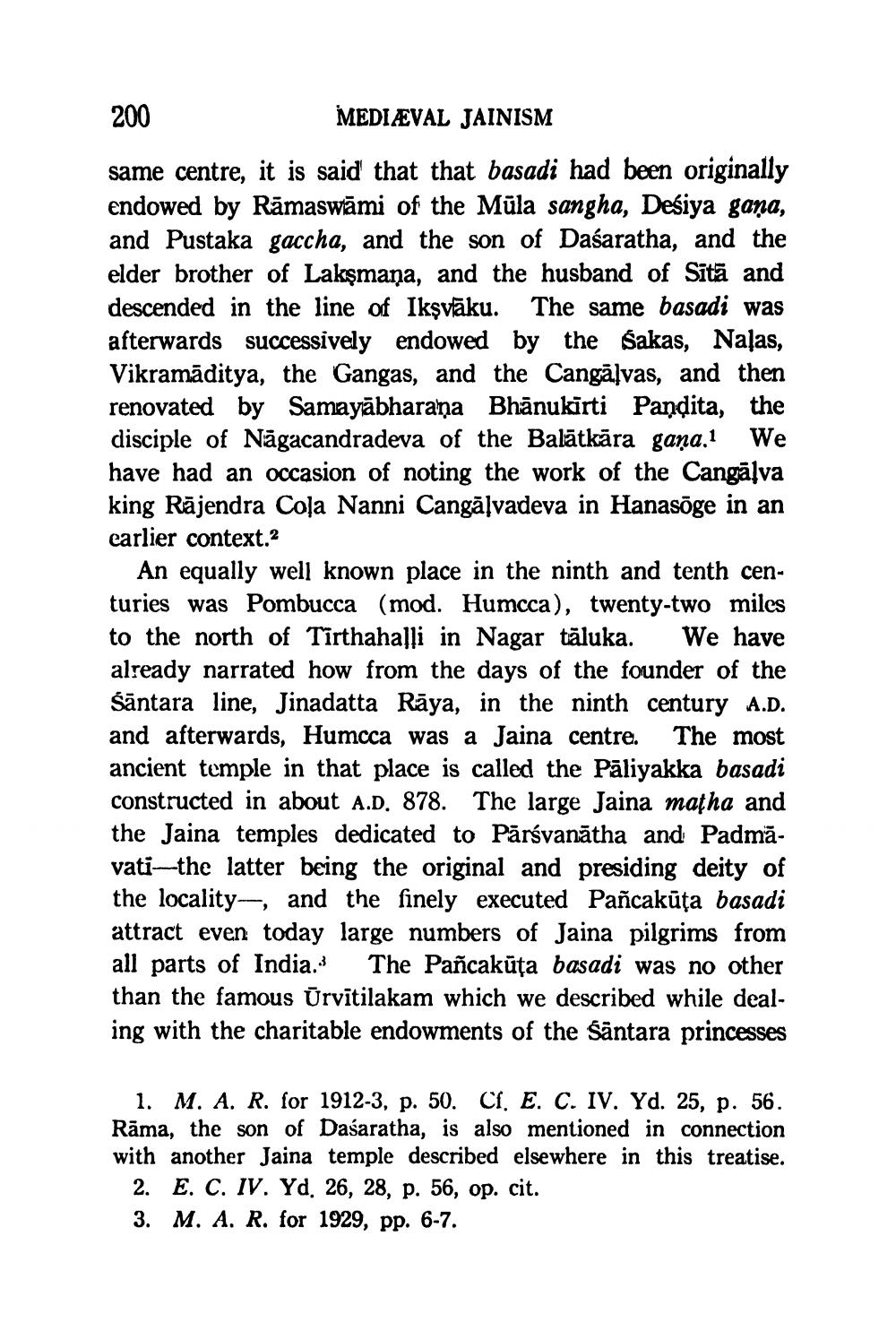________________
200
MEDIÆVAL JAINISM same centre, it is said that that basadi had been originally endowed by Rāmaswāmi of the Müla sangha, Deśiya gana, and Pustaka gaccha, and the son of Dasaratha, and the elder brother of Lakşmaņa, and the husband of Sītā and descended in the line of Ikşvāku. The same basadi was afterwards successively endowed by the Sakas, Nalas, Vikramāditya, the Gangas, and the Cangāļvas, and then renovated by Samayābharaṇa Bhānukirti Pandita, the disciple of Nāgacandradeva of the Balātkāra gana. We have had an occasion of noting the work of the Cangāļva king Rājendra Cola Nanni Cangāļvadeva in Hanasõge in an earlier context.?
An equally well known place in the ninth and tenth centuries was Pombucca (mod. Humcca), twenty-two miles to the north of Tīrthahalli in Nagar tāluka. We have already narrated how from the days of the founder of the śāntara line, Jinadatta Rāya, in the ninth century A.D. and afterwards, Humcca was a Jaina centre. The most ancient temple in that place is called the Pāliyakka basadi constructed in about A.D. 878. The large Jaina matha and the Jaina temples dedicated to Pārsvanātha and Padmāvati—the latter being the original and presiding deity of the locality, and the finely executed Pañcakūta basadi attract even today large numbers of Jaina pilgrims from all parts of India. The Pañcakūta basadi was no other than the famous ūrvītilakam which we described while dealing with the charitable endowments of the śāntara princesses
1. M. A. R. for 1912-3, p. 50. CI. E. C. IV. Yd. 25, p. 56. Rāma, the son of Daśaratha, is also mentioned in connection with another Jaina temple described elsewhere in this treatise.
2. E. C. IV. Yd. 26, 28, p. 56, op. cit. 3. M. A. R. for 1929, pp. 6-7.




